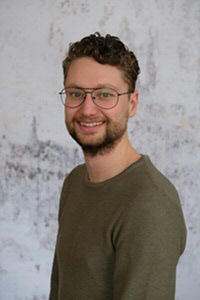Kan pupilgrootte een betrouwbare meting van taalkundige opvallendheid zijn?

Salience, ook wel ‘opvallendheid’, wordt in de taalkunde vaak gebruikt als verklarend begrip voor uiteenlopende processen. Voorbeelden hiervan zijn de volgorde waarin we een taal leren en welke aspecten van een taal de grootste kans hebben om te veranderen. Deze zogenaamde ‘opvallendheid’ zorgt er in deze gevallen voor dat bepaalde taalkundige aspecten meer geneigd zijn om onze aandacht te trekken.
Het concept salience heeft echter geen precieze definitie, waardoor het begrip op veel verschillende manieren wordt gebruikt. PhD-onderzoeker Vincent Boswijk wil in zijn experiment achterhalen of verschillende bestaande operationaliseringen van het begrip gekwantificeerd kunnen worden. Het experiment bestaat uit het meten van de pupilgrootte van de deelnemers terwijl zij luisteren naar gesproken zinnen. Pupillen reflecteren cognitieve processen, zoals wanneer iets je aandacht grijpt. Daarnaast geeft het een inkijk in de cognitieve zwaarte die bij de verwerking van de zinnen komt kijken.
Het doel van het experiment is het vinden van een mogelijke gemeenschappelijke factor in de verschillende manieren waarop salience gedefinieerd wordt. Met een beter begrip van het concept wordt er meer duidelijk over het hoe en waarom van taalverandering.
De belangrijkste conclusie van het experiment is dat de helft van de gevallen laat zien dat ‘opvallende categorieën’ een grotere verwijding van de pupil veroorzaken dan de ‘neutrale’ categorie. Deze grotere pupilgrootte wijst op een verhoogde activatie, waarschijnlijk doordat de betreffende zinnen verrassender waren en meer de aandacht van de deelnemers pakten. Met andere woorden: deze zinnen waren meer opvallend (salient).
Elektro-encefalografie (EEG)
In vervolgonderzoek worden de metingen met behulp van Elektro-encefalografie (EEG) herhaald. Met deze methode wordt hersenactiviteit gemeten, waardoor cognitieve processen nauwkeuriger gemeten kunnen worden. Daarnaast wordt onderzocht of het begrip salience verder uitgekleed kan worden en wordt er gezocht naar een overkoepelende, werkbare definitie van het concept voor de taalkunde.
Vincent Boswijk is PhD-onderzoeker binnen de flagship Culture, Language and Technology. Zijn eerste paper Salience is in the Eye of the Beholder: Pupil size reflects Acoustically Salient variables is open access gepubliceerd op ScienceDirect.
